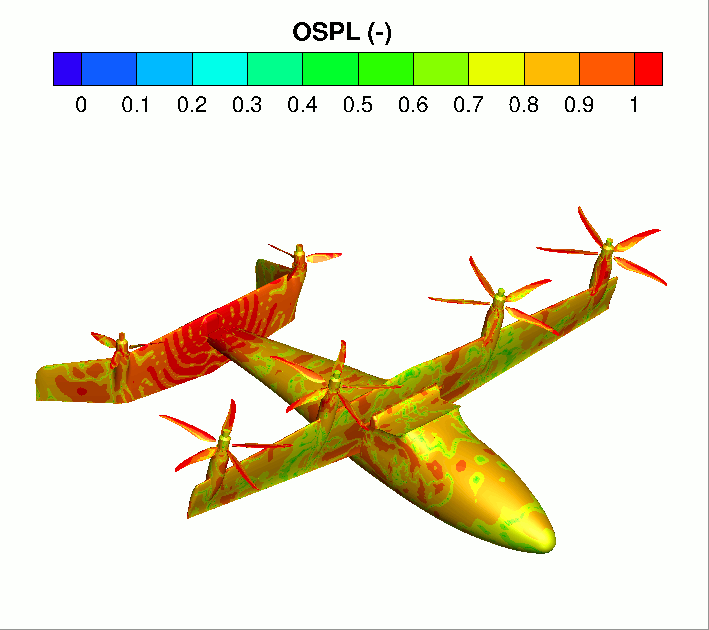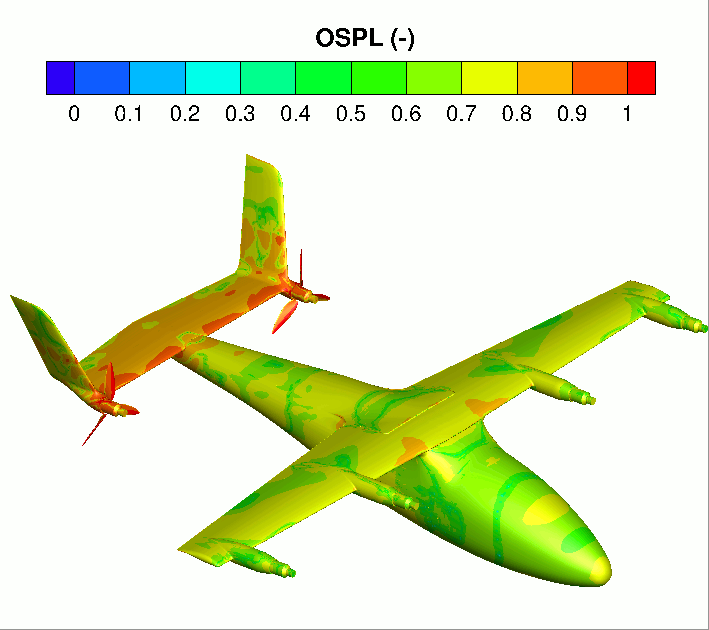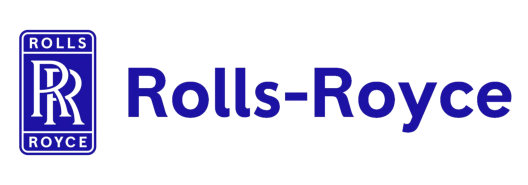eVTOL Aeroacoustics
With the advancement in electric battery design, aircraft designers and manufacturers are no longer constrained to established configurations. Developments in Vertical Take-off and Landing (VTOL) aircraft have also been seen in recent times through the design of modern tiltrotor aircraft such as the AW609 and the V-280 Valor. The combination of these developments allowed engineers to propose designs which utilise the vertical take-off and landing capabilities of a tiltrotor aircraft with electrically driven propulsion systems, deemed eVTOL (Electrically driven Vertical Take-off and Landing). This investigation aims to develop an understanding of the aeroacoustic emissions associated with an eVTOL aircraft, due to acoustics being one of the key components in future certification. The study consists of an investigation into the baseline Rolls-Royce design, followed by an optimisation study aiming to reduce the amount of noise generated.
Publications
Higgins, R.J., Barakos, G.N., Shahpar, S. & Tristanto, I. (2020) An Aeroacoustic Investigation of a Tiltwing eVTOL Concept Aircraft In: AIAA AVIATION 2020 Forum, Virtual Event, 15-19 June 2020 (doi: 10.2514/6.2020-2684)
Higgins, R.J., Barakos, G.N., Shahpar, S. & Tristanto, I. (2021) A Computational Fluid Dynamic Acoustic Investigation of a Tiltwing eVTOL Concept Aircraft Aerospace Science & Technology Vol. 111. (doi: 10.1016/j.ast.2021.106571)
Simulation Setup
Using the HMB3 CFD solver, the baseline configuration of the aircraft was simulated in hover and forward-flight. For this, a grid was derived using the chimera method and this method allowed the individual components of the aircraft to be meshed within its own sub-domain. This is benefitical as it allows for the rotation of the propeller blades and wing/tail when adjusting the flight condition.

In this work, the k-w turbulence model is used to close the Unsteady Reynolds-Averaged Navier-Stokes (URANS) equations. This was selected due to the fact that tonal noise is the main component for this aircraft.
Baseline Configuration Results
Presented below is the non-dimensionalised Overall Sound Pressure Level (OSPL) for the aircraft surface in hover and forward-flight. A significant reduction in noise level is found following the transition to forward-flight. In hover, several additional sources of acoustics are found are a consequence of the blade rotation. This includes the oscillations observed around the fuselage-tail junction. Such oscillations are not found in forward-flight with the highest value sound level contained to the rear of the aircraft.
|
Hover
|
Forward-Flight
|
As observed, the hover flight condition is found as more critical in terms of its aeroacoustic emissions. Therefore, any optimisation study must focus on the reduction of noise during this regime.
Synchrophased Noise Reduction
The technique of propeller synchrophasing is introduced to the concept aircraft in order to reduce the acoustic emissions. Synchrophasing involves the introduction of a phase angle between the propellers in order to balance the noise contributions.
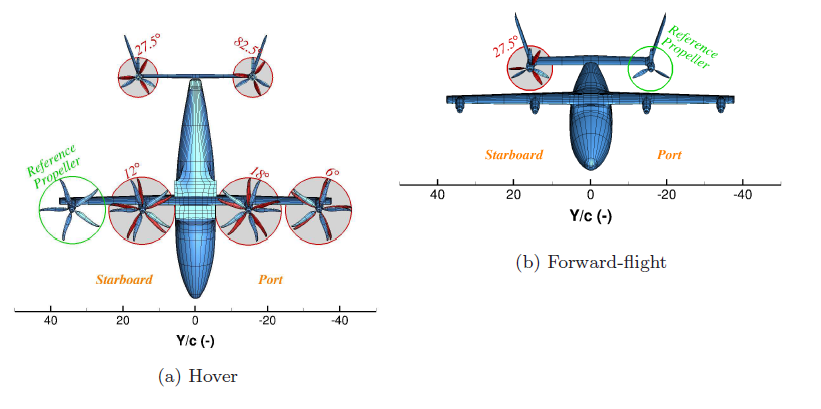
Using this technique benefits in terms of acoustics were found with the details presented in the selected publications.
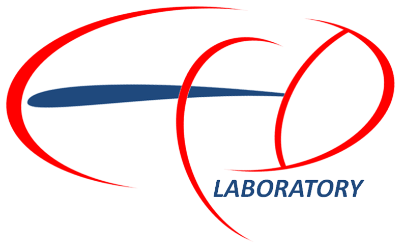
Supported by
Contacts
George Barakos - Professor, George.Barakos@glasgow.ac.uk
Ross Higgins - Research Assistant, ross.higgins@glasgow.ac.uk


